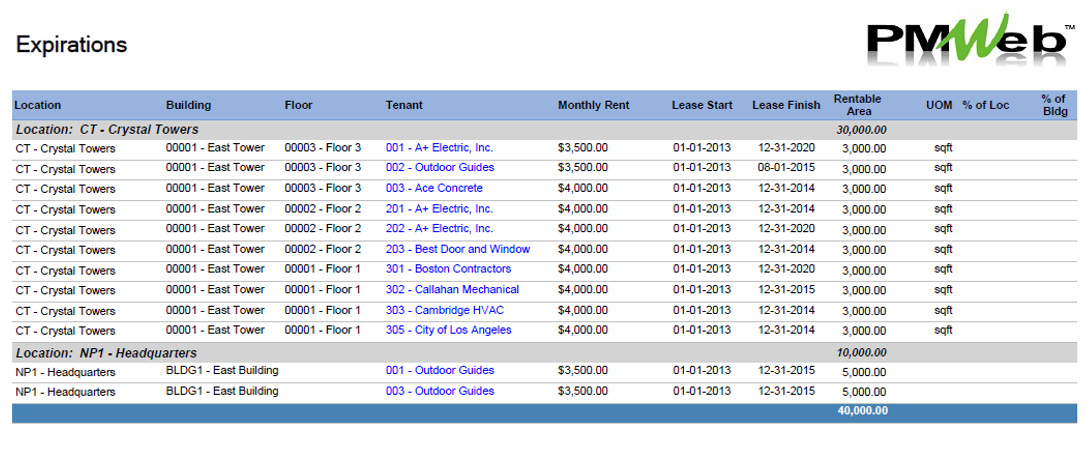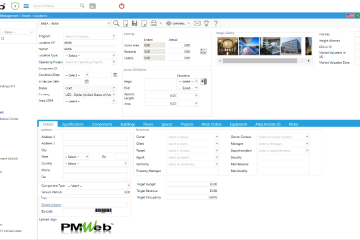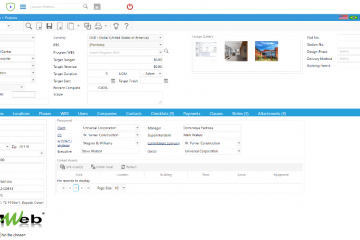For property owners, the revenue from either sale of completed real estate spaces or the lease of those spaces is the benefit that they will realize when the capital asset development is completed. Unlike the design and construction of the real estate development, which could take up to 5 years to complete, the property life could be much longer.
As part of PMWeb Project Management Information System (PMIS), which was detailed in the past articles on how property owners can capture details of all real estate and equipment assets as well as manage work requests, work order management for both reactive and preventive maintenance as well as periodical assets inspection, managing leases is another function of PMWeb asset management module. Leases could be for short-term or long-term periods as well as they could with individuals, companies, corporates, institutions, among others. Leases can be limited to a specific space, group of spaces, or all spaces of a particular real estate asset. Leases will include details on the leased area, rent per area per month and year, lease start and end dates, tenant and the landlord, among others.
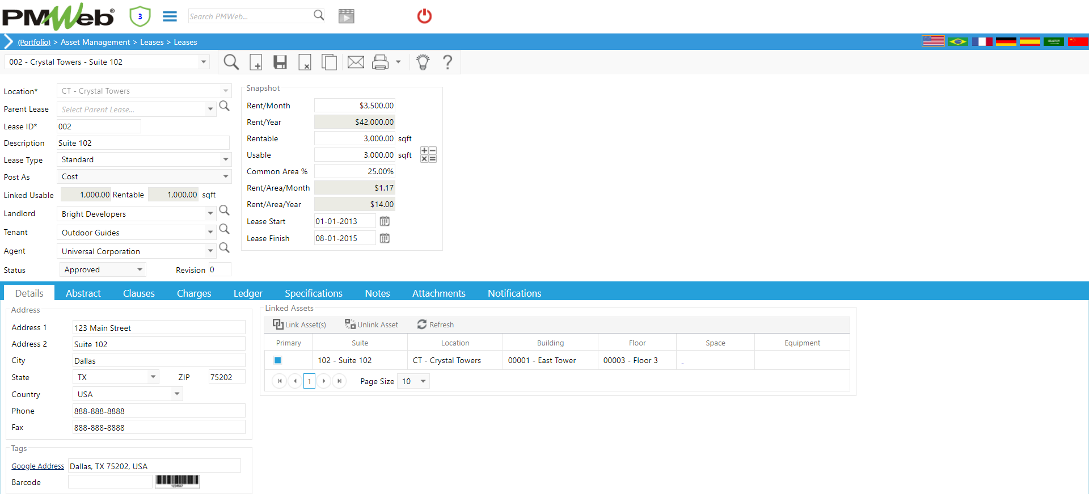
In addition, the abstract lease tab allows the property owner to capture more details on the lease such as the lessor and lessee, first payment date and amount, last payment date and amount, signed date, move-in and move-out dates, rental term, renewal term, and billing terms, deposit held, required and interest date among others.
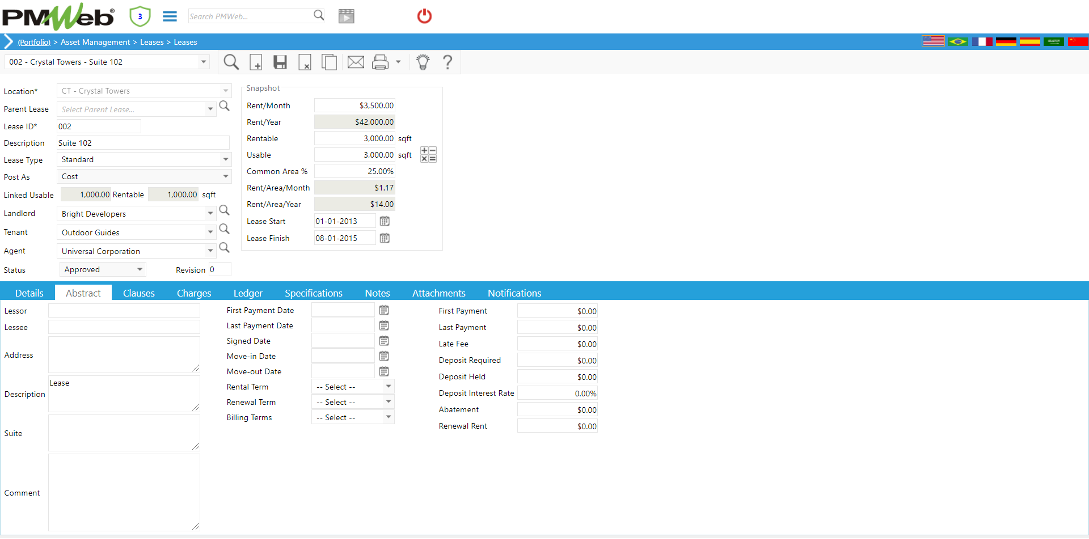
The lease agreement will include details of all necessary charges and advanced charges for escalations, recoveries, and overcharges. PMWeb allows the property owner to create total charges to be applied to the Lease throughout its life. Escalations are adjustments to charges – up or down – over a Lease’s lifetime, which can occur once or reoccur periodically. They can escalate by fixed percentages and amounts or be tied to Consumer Price Indexes (CPI). On the other hand, recoveries are charged back expenses to clients. They could be based on one of several calculation methods, including A fixed percentage, The number of current leases at the moment recovery occurs, the number of units at the location, The Common Area percentage defined in the header of the Lease, the Rentable Area percentage specified in the header of the Lease and the Usable Area percentage defined in the header of the Lease. Finally, overages are charges calculated as a percentage of a tenant’s gross or net income.
Basic and advanced charges can be created on the fly by clicking the Add button, or pre-defined charges can be dragged and dropped to add them to the lease. The Start, End, and Post Every field is used in automatically posting charges over the lifetime of the lease. Orders with a Cost Code will be posted to the Cost Ledgers. To charge an advanced one, the user needs to click the button in the Amount field to open the Lease Charges Details dialog. This will allow using the dialog to activate a charge’s Escalations, Recoveries, or Overages component by clicking the light bulb icons as shown below for Escalations.
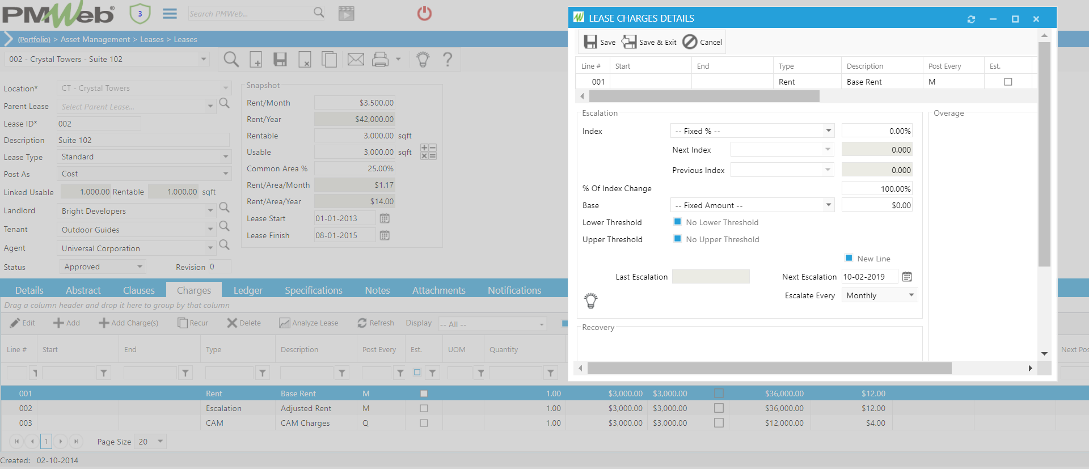
The cost ledger tab in the lease agreement displays all currency-based transactions related to the lease. Transactions can be added to the tab in several ways, including By using the Add button in the toolbar and directly editing the ledger line, by posting charges using the Lease Administrator, by creating Tenant Invoices, and by making Payments.

Similar to all other PMWeb modules, the PMWeb lease module attachment tab allows attaching all supportive documents like the lease agreement, among other documents. Usually, all those documents will be uploaded and stored into the PMWeb document management repository, where folders and subfolders will be created to map the property owner filing system. Also, the attachment tab allows linking relevant PMWeb records as well as MS Outlook emails imported into PMWeb.
PMWeb allows assigning a workflow for each lease record to formalize the steps for reviewing and approving the lease. The workflow steps will include the duration for each step and available actions that the reviewer can take. Also, to whom it needs to be returned to be resubmitted. The workflow can also include conditions to map the approval authority levels.
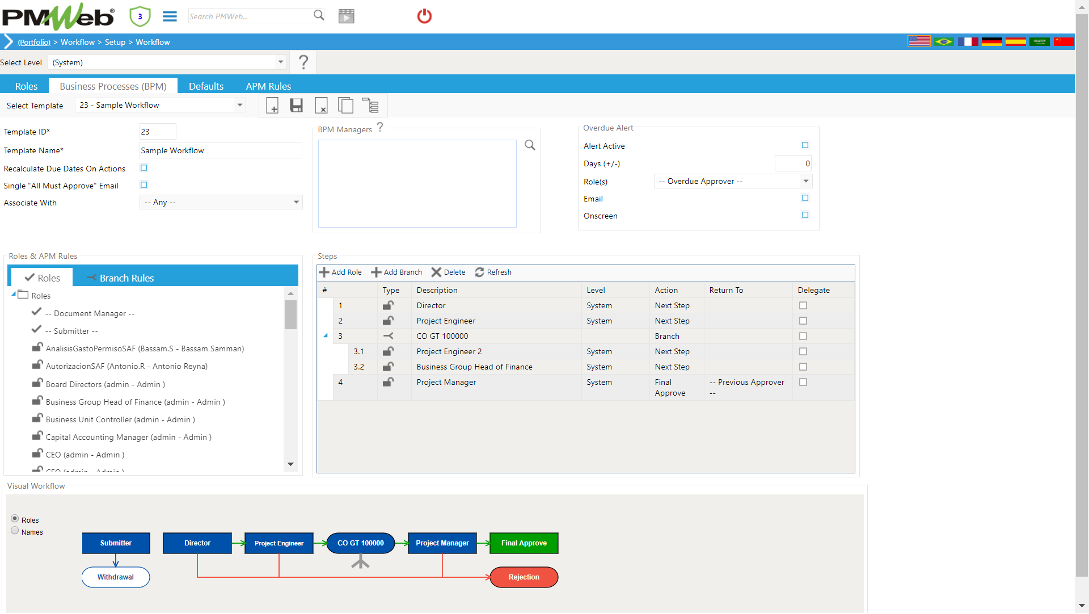
PMWeb Suites module, which is optional, allows the property owner to track all assets in detail as well as combine them in the way that the property owner normally lease them.
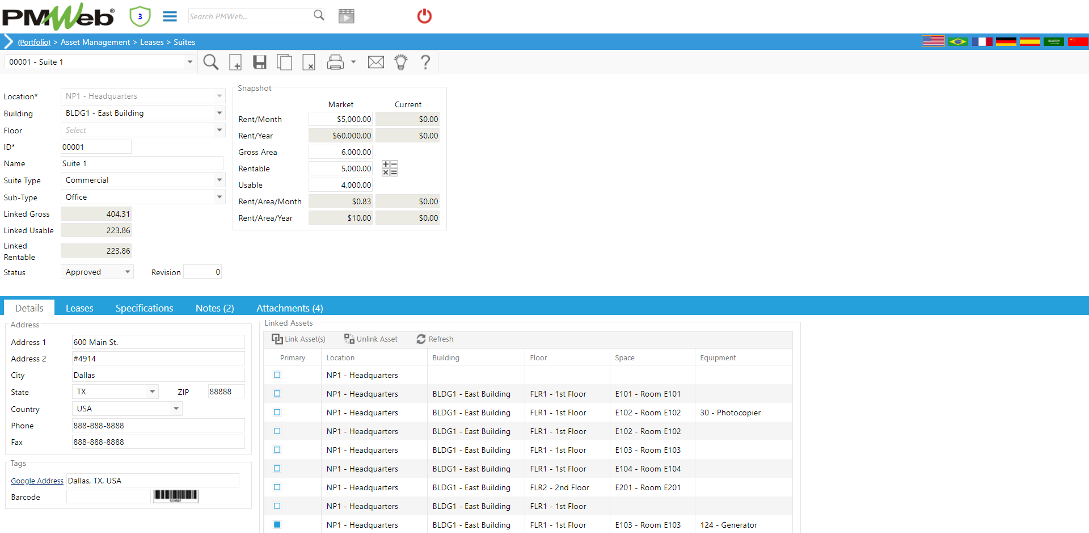
The suite module also allows the property owner to develop a leasing history of the Suite. Leasing history can include data such as occupancy rates, market versus actual lease income, income per area, and much more.

PMWeb Tenant Invoices module allows adding tenant invoices manually or automatically by posting the Lease Administrator batches. Tenant Invoices will appear in the Leases module Ledger Tab, and Payments can be applied to them. Tenant Invoices require the property owner to select a Location and a Lease. They feature a Due Date field (making aging reports possible) and a Cost Period field (for financial statements). If a Cost Code is selected, lines in the Tenant Invoice Details Tab Table are posted to the Cost Ledgers.

PMWeb business intelligence report writer can monitor, evaluate, track and report on the other lease agreements that the property owner has. The form, format, and content of those forms and reports will be determined by the property owner depending on the reporting needs. The information captured in each report can be linked to other reports to enable the property owner to trace the information details. For example, one of the many ready to use forms available in PMWeb is the Effective Lease Rate by Year is a sample form that details the lease agreement details for each lease agreement, including details of the base agreement and all changes.

The Rent Roll Detail by Leases, another ready-to-use report, details the current lease agreements at each location where the property owner has real estate assets. The report can be grouped by location, building asset, tenant, among others.

Another ready to use report, the lease expirations report, details all lease agreements that have either expired or due to expire within the specified period. The report can be grouped by location, building asset, tenant, among others.
